Cenotes
What is a Cenote in Mexico?
What is a cenote, and why is everyone obsessed with them? A cenote is a natural pit or sinkhole that has been forming for several centuries or thousands of years. This happens as a result of limestone caves collapsing and exposing a natural pool.
This natural sinkhole or pool gets then filled with rain water and with water flowing through the underground river, to which these cenotes are connected to. The word cenote is derived from a Mayan term dzonot. This word literally means well. But it’s not as easy as saying that cenotes are underground sinkholes and that’s it. If you have been to any of the cenotes in Mexico, you will know that there are a variety of cenote types:
Enjoy a Cenote Experience
Book 3 nights directly on our website and enjoy one of Tulum’s most sought-after experiences, included during your stay.
Cenote Experience: Crystal-clear waters, nature, and a moment to connect with the spirit of Tulum.
How it works: Upon arrival, please inform the front desk that you wish to activate the Cenote Experience promotion, and our team will assist you in scheduling your experience during your stay.
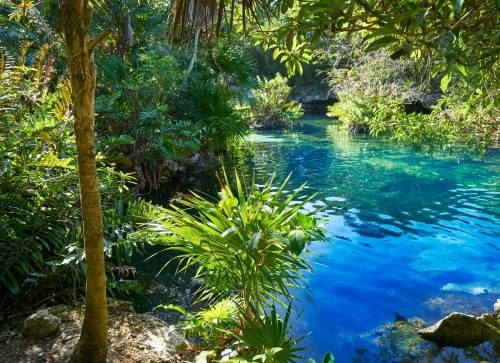
Open Cenotes
Open cenotes are like natural, open pools. No caves or anything like that. They can be more or less deep, depending on which cenote you go to. Some of the open cenotes are also connected to an underground river passage (and they are usually suitable for diving).
Semi Open Cenotes
As the name implies, this type of cenote has some parts that are exposed like the open cenotes above, and some portions that are partially hidden by a cave.
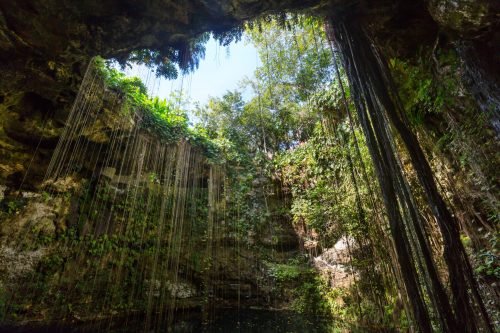
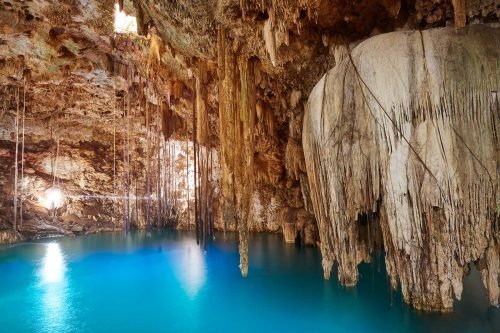
Underground cenotes
This type of cenote is the most difficult to reach. This explains why they are the least researched (and visited), because only experienced divers can access these hidden cenotes.
Cave cenotes
Cave cenotes can usually be accessed via a land-level entrance with a staircase. Cave cenotes open up to an underground pool with shallower and deeper areas. This type of cenotes is the most mysterious one, and some of my favorite cenotes are in this category. The cenotes that offer underwater passageways that are connected to the Mayan river system are the best destinations for cavern diving. Cenotes have cultural and religious significance to the ancient Mayans, who believe that cenotes are passages to the underworld and consider them sacred. This explains why ancient Mayans used to perform rituals in the cenotes.
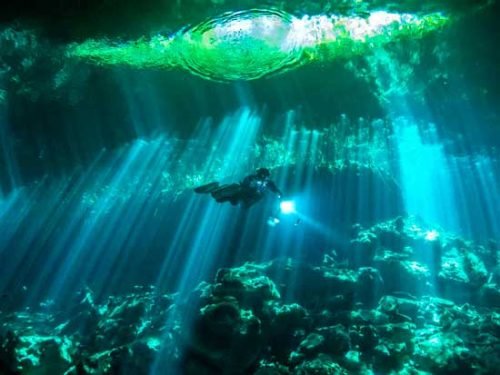
Cenotes around Tulum area
Aktun Chen
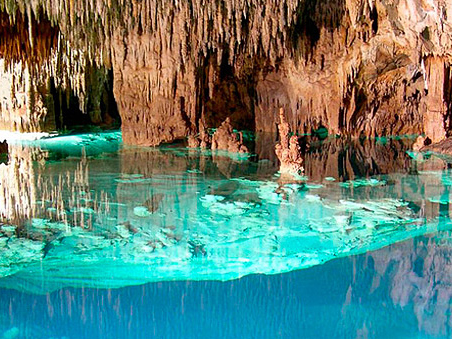
This beautiful nature park in the driving range of Tulum lies in the heart of a tropical rainforest untouched by human hand. Splendid views, amazing wildlife and plenty of entertainments for the entire family make it a perfect place for an active vacation. Are you ready to take off?
Cenote Dos Ojos
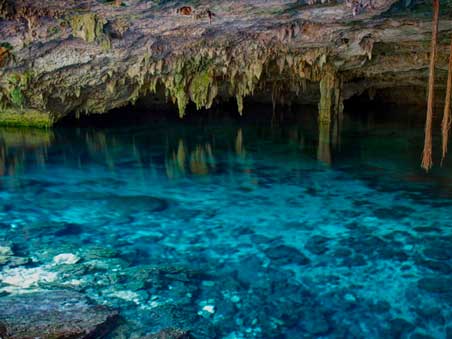
This NEEDS to be on your bucket list! Cenote Dos Ojos in Tulum might easily be the most famous cenote in the world. It has appeared in multiple documentaries and movies, and I can honestly understand why. It’s just incredibly beautiful! The blue water that almost looks painted, incredible rock formations, and plenty of opportunities for divers make it one of the most beautiful cenotes near Tulum.
Cenote Nicte Ha

Cenote Nicte Ha is largely above ground, but it’s the most magical place to take a swim surrounded by nature. The water is clear and clean, and plenty of lily pads and other plants float gently on the surface, while surrounding trees dip their roots into the cenote to soak up some of that fresh water.
Cenote Calavera

Calavera means “skull”- a pretty grim-sounding name, right? However, there’s nothing dangerous about the Calavera cenote. Rather, it takes its name from the three sinkholes which open up into it, which from above resemble the eye sockets and mouth of an enormous skull. It’s quite a bit deeper than the other cenotes listed above, which makes it the perfect place to try the legendary Yucatan sport of cenote diving (as in jumping) if you’re feeling brave enough. If you’re not, then don’t worry- there’s a ladder you can climb down instead!
Cenote Car Wash
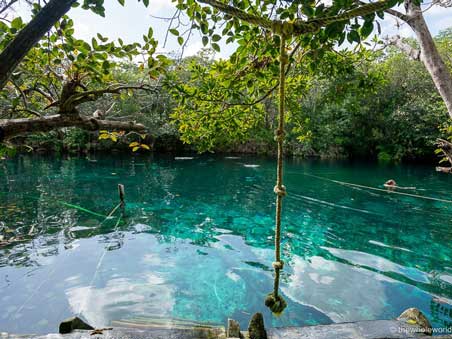
Officially, this outdoor swimming hole is called Aktun Ha Cenote, but most locals know it as the Cenote Carwash. It rarely gets crowded, so it’s the ideal spot to come for a swim and relax (even better if you have a heart floatie to play with!). If you’ve got snorkeling gear, then you’ll be able to gaze in wonder at the vast underwater “garden” that lies at the bottom. Diving at Car Wash Cenote is also very popular, but you should contact a diving center beforehand to organize a dive.
Gran Cenote
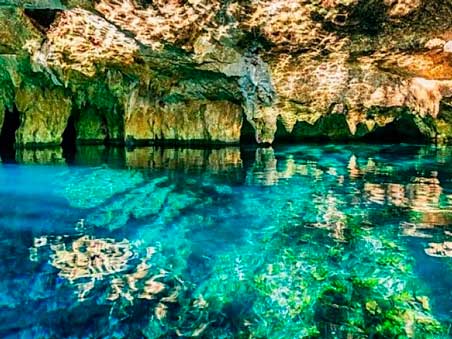
Located between Tulum and Coba, Gran Cenote is one of the most popular cenotes in Tulum… and it’s easy to understand why. The color of the water is simply amazing, and you could spend hours snorkeling through the cenote caves. And what caves! You can see stalagmites and stalactites, and even swim with small turtles. Gran Cenote is beautiful, but can get very crowded, so make sure you come early in the morning 9 am or right before closing time to avoid the big crowds.
Cenote Cristal
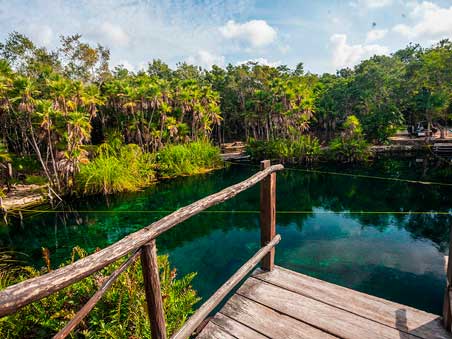
Cenote Cristal is a beautiful cenote that looks like a pristine lake. It is a well-kept cenote but not too commercialized. Because of its crystal-clear waters (thus, the name), you will be able to swim with tons of small fishes. There is also a high wooden platform that you can jump off from if you like some adventure. This cenote is located right next to Cenote Escondido and most tourists visit both of these cenotes.
Cenote Escondido
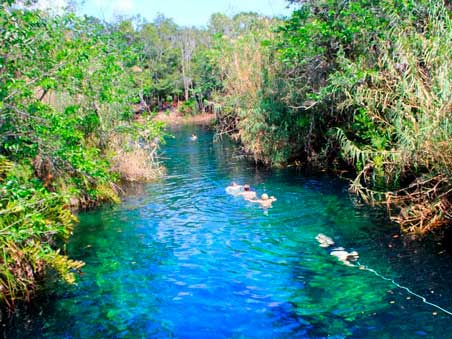
Cenote Escondido is across the road from Cenote Cristal. It’s a large, open cenote so it is never crowded. There is also a rope swing that you can use to jump into the water in style. It is perfect for swimming, snorkeling, or diving.
Cenote Hunaan – Ha

Cenote Xunaan-Ha is one of the most picturesque cenotes you will find, and one of the most secret cenotes in Tulum. It’s located in Chemuyil village, half way between Tulum and Akumal, and is known as the fourth largest cave system within Riviera Maya. It’s suitable for both snorkelers and advanced divers.
